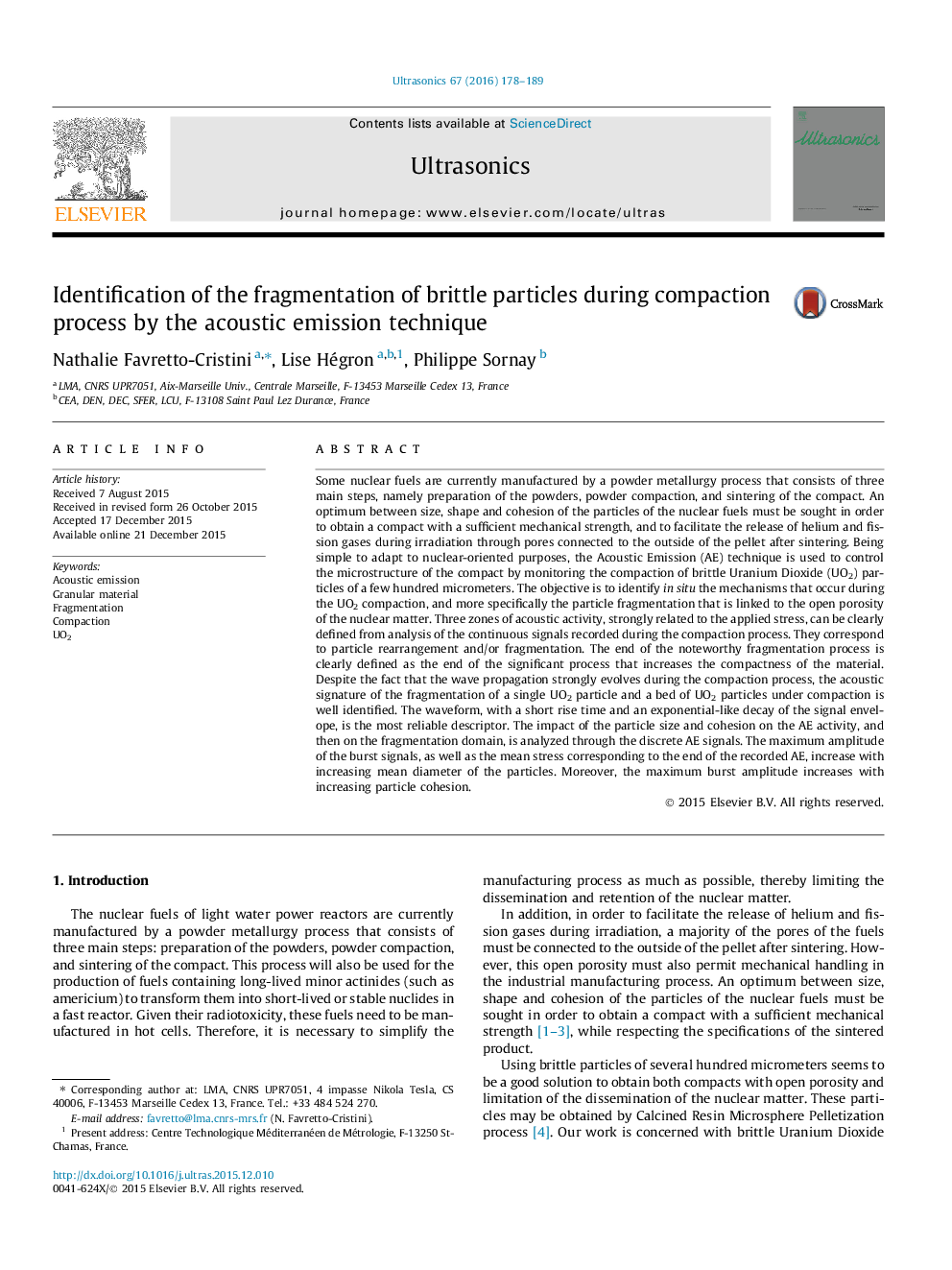| Article ID | Journal | Published Year | Pages | File Type |
|---|---|---|---|---|
| 1758635 | Ultrasonics | 2016 | 12 Pages |
Abstract
Some nuclear fuels are currently manufactured by a powder metallurgy process that consists of three main steps, namely preparation of the powders, powder compaction, and sintering of the compact. An optimum between size, shape and cohesion of the particles of the nuclear fuels must be sought in order to obtain a compact with a sufficient mechanical strength, and to facilitate the release of helium and fission gases during irradiation through pores connected to the outside of the pellet after sintering. Being simple to adapt to nuclear-oriented purposes, the Acoustic Emission (AE) technique is used to control the microstructure of the compact by monitoring the compaction of brittle Uranium Dioxide (UO2) particles of a few hundred micrometers. The objective is to identify in situ the mechanisms that occur during the UO2 compaction, and more specifically the particle fragmentation that is linked to the open porosity of the nuclear matter. Three zones of acoustic activity, strongly related to the applied stress, can be clearly defined from analysis of the continuous signals recorded during the compaction process. They correspond to particle rearrangement and/or fragmentation. The end of the noteworthy fragmentation process is clearly defined as the end of the significant process that increases the compactness of the material. Despite the fact that the wave propagation strongly evolves during the compaction process, the acoustic signature of the fragmentation of a single UO2 particle and a bed of UO2 particles under compaction is well identified. The waveform, with a short rise time and an exponential-like decay of the signal envelope, is the most reliable descriptor. The impact of the particle size and cohesion on the AE activity, and then on the fragmentation domain, is analyzed through the discrete AE signals. The maximum amplitude of the burst signals, as well as the mean stress corresponding to the end of the recorded AE, increase with increasing mean diameter of the particles. Moreover, the maximum burst amplitude increases with increasing particle cohesion.
Related Topics
Physical Sciences and Engineering
Physics and Astronomy
Acoustics and Ultrasonics
Authors
Nathalie Favretto-Cristini, Lise Hégron, Philippe Sornay,
